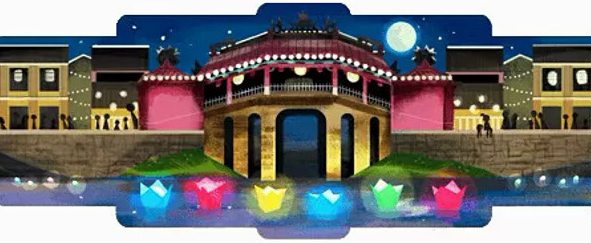The Japanese Covered Bridge in Hoi An is also known as Chua Cau Bridge (Pagoda Bridge). It is a unique covered structure built by the Japanese traders in the 17th century. The bridge is composed of two parts: the bridge and a pagoda at one of its end.
The wooden pagoda is roofed with yin-yang tiles on one side. At the main entrance of the Japanese Covered Bridge, there is a large plate embossed with three Chinese letters that read, “Lai Yuan Qiao,” meaning “The Welcoming Bridge”. This name was chosen by Lord Nguyen Phuc Chu during his visit to Hoi An in 1719.
Inside the pagoda, there is no Buddha statue, except for a wooden statue of Bac De Tran Vo in the pagoda’s main hall. Bac De Tran Vo is the protector god of the region who brought happiness and wealth to the locals.
At the two bridgeheads stand two wooden adoration statues: a dog and a monkey. It is said that the construction of the bridge began in the year of the dog and completed in the year of the monkey. According to Japanese belief, these are sacred animals that are able to control the sea monster.
Despite being built by the Japanese, the Pagoda Bridge was adorned in red-lacquer and decorated with a combination of elaborate Vietnamese, Japanese, and Chinese carvings.
With its special architecture, this 400-year-old bridge appears on the Vietnamese banknote VND 20,000.
In addition, the Google Doodle featured the image of Hoi An with symbols of the Chua Cau and colorful lanterns on its homepage on July 16, 2019, coinciding with the traditional Lantern Festival. The event takes place on the 14th day of each lunar month in the town of Hoi An.
The bridge, which is one of the top tourist attractions in Hoi An, is in grave danger. Hoi An authorities have taken actions to protect the bridge without affecting its appearance. Quite a few beams have been replaced with iron as the older beams worsened; only 20 people are allowed on the bridge at a time to reduce the impact on the bridge.
Eager for a visit? Let us help you plan your travel itinerary!